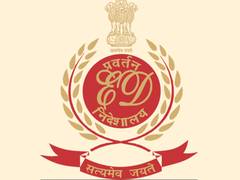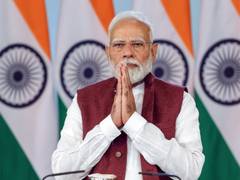74th Republic Day parade: A tableau displaying millets at Kartavya Path
New Delhi [India], January 26 (ANI): A tableau of the Indian Council and Agricultural Research (ICAR) on the theme International Year of Millets 2023 was among the special attractions during the 74th Republic Day parade at Kartavya Path on Thursday.
The tableau of ICAR depicted the flourishing crops of jowar, bajra, ragi, kutki and sanwa. Besides, the tractor in front of the tableau is decorated with a rangoli of millet grains. The government of India under Prime Minister Narendra Modi spearheaded the United Nations General Assembly (UNGA) resolution for declaring the year 2023 as the International Year of Millets and the proposal of India was supported by 72 countries. UNGA declared 2023 as the International Year of Millets back in March 2021.
The International Year of Millets 2023 officially kicked off on January 1, 2023.
India is a global leader in the production of millets with an area of about 12.5 million hectares and a share of more than 15 percent of the world’s total production. Rajasthan, Uttar Pradesh, Haryana, Gujarat, Madhya Pradesh, Maharashtra, Karnataka, Tamil Nadu, Andhra Pradesh, and Telangana are the major millets producing states.
Indian Council of Agricultural Research (ICAR), through its Indian Institute of Millets Research (IIMR), has so far succeeded in developing many bio-fortified varieties and novel products for the benefit of farmers and society at large.
What are millets?
Millet is a common term for categorizing small-seeded grasses that are often called Nutri-cereals. Some of them are sorghum (jowar), pearl millet (bajra), finger millet (ragi), little millet (kutki), foxtail millet (kakun), proso millet (cheena), barnyard millet (sawa), and kodo millet (kodon).
Millets are now being promoted as ‘Super food’.
Significance and benefits of millets:
Millets are nutritionally superior to wheat and rice owing to their higher protein levels and a more balanced amino acid profile. Millets also contain various phytochemicals which exert therapeutic properties owing to their anti-inflammatory and anti-oxidative properties.
Further, besides being climate resilient, millet grains are rich sources of nutrients like carbohydrates, protein, dietary fibre, and good-quality fat; minerals like calcium, potassium, magnesium, iron, manganese, zinc and B complex vitamins.
Most importantly, millet production is not dependent on the use of chemical fertilizers.
Background of millets in India:
Millets were traditionally consumed, but due to the push given to food security through Green Revolution in the 1960s, millets were less consumed and almost forgotten.
Before the Green Revolution, millets made up around 40 per cent of all cultivated grains, which has dropped to around 20 per cent over the years.
India’s millet trade:
India exported millets products worth of USD 34.32 million during 2021-22. In 2020- 21, India exported millets worth USD 26.97 million against USD 28.5 million in 2019-20.
India’s major millet exporting countries are UAE, Nepal, Saudi Arabia, Libya, Oman, Egypt, Tunisia, Yemen, the UK, and the US.






